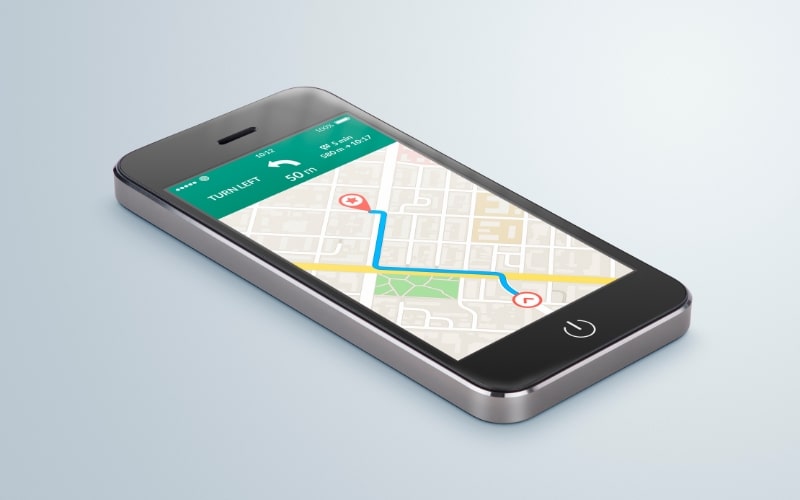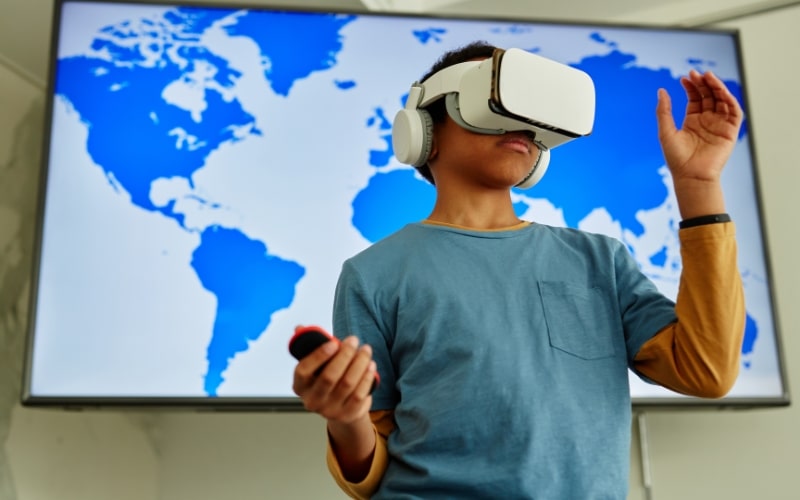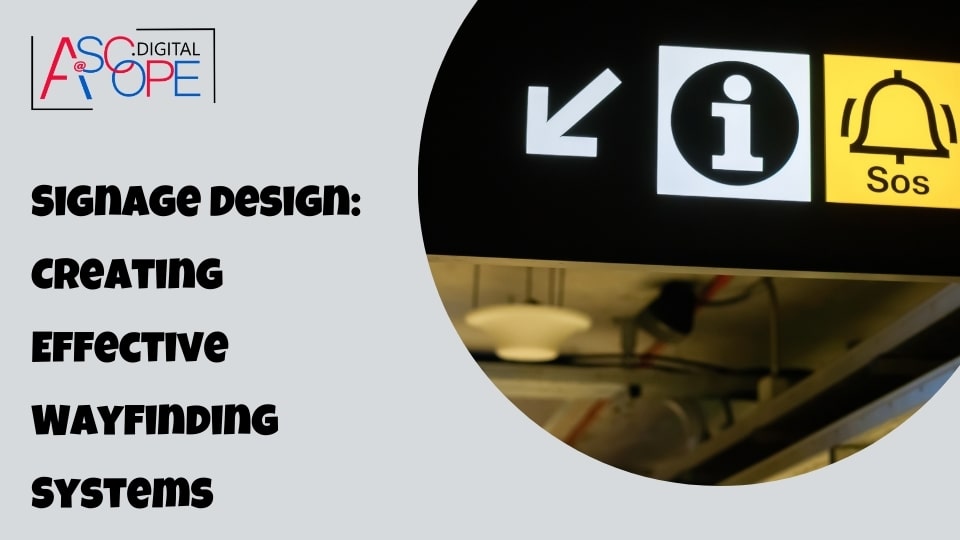Wayfinding is an essential aspect of human interaction with the built environment. It helps people understand and navigate spaces, enhancing their overall experience. Effective wayfinding systems depend significantly on well-designed signage. This article delves into the intricacies of signage design, focusing on creating effective wayfinding systems that not only guide but also enhance the user experience.
The Importance of Wayfinding

Wayfinding refers to the information systems that guide people through a physical environment and enhance their understanding and experience of the space. It is a crucial element in various settings, including hospitals, airports, malls, universities, and urban environments. Effective wayfinding helps reduce anxiety and confusion, making spaces more accessible and welcoming.
Understanding the Basics of Signage Design
Signage design is a multi-faceted discipline that combines graphic design, architecture, and user experience principles. At its core, it involves the creation of signs that convey information clearly and effectively. Good signage design considers the environment, the users, and the purpose of the signs. It ensures that information is accessible, legible, and understandable at a glance.
Key Components of Effective Signage
- Clarity: Signs should be easy to read and understand.
- Consistency: Use consistent design elements such as fonts, colors, and symbols.
- Visibility: Ensure signs are placed in prominent locations and are visible from a distance.
- Simplicity: Avoid clutter by providing only essential information.
- Legibility: Use appropriate fonts and contrast to ensure readability.
Types of Wayfinding Signage
Wayfinding signage can be broadly categorized into four types:
- Identification Signs: These signs identify a place or landmark. Examples include room numbers, department names, or building names.
- Directional Signs: These signs guide users to their destination. Arrows, paths, and floor plans fall into this category.
- Informational Signs: These provide essential information about the environment, such as opening hours or rules.
- Regulatory Signs: These inform users about the rules and regulations of the space, like no smoking signs or speed limits.
The Role of Colors and Symbols
Colors and symbols play a vital role in signage design. They can convey information quickly and universally. For instance, red often indicates danger or stop, while green indicates safety or go. Symbols can transcend language barriers, making them crucial in multicultural environments.
Choosing the Right Colors
- Contrast: High contrast between text and background improves readability.
- Consistency: Use consistent color schemes to avoid confusion.
- Cultural Sensitivity: Be aware of cultural interpretations of colors.
Effective Use of Symbols
- Universality: Use universally recognized symbols where possible.
- Simplicity: Keep symbols simple to ensure quick recognition.
- Consistency: Use the same symbols consistently throughout the signage system.
Typography in Signage Design

Typography is another critical element in signage design. The choice of typeface, size, spacing, and alignment can significantly impact the legibility and readability of signs.
Selecting the Right Typeface
- Legibility: Choose typefaces that are easy to read from a distance.
- Consistency: Use the same typeface family throughout the wayfinding system.
- Appropriateness: Ensure the typeface matches the tone and purpose of the environment.
Optimal Text Size and Spacing
- Visibility: Text size should be large enough to be read from the intended viewing distance.
- Hierarchy: Use different sizes to create a visual hierarchy and guide users.
- Spacing: Adequate spacing between letters, words, and lines improves readability.
Placement and Orientation of Signs
The placement and orientation of signs are crucial to their effectiveness. Signs should be strategically placed where they are most needed and can be easily seen and read.
Strategic Placement
- Decision Points: Place signs at key decision points, such as intersections and entrances.
- Visibility: Ensure signs are not obstructed by other elements.
- Height: Position signs at eye level for maximum readability.
Orientation Considerations
- Directional Flow: Align signs with the natural flow of movement in the space.
- Viewing Angles: Consider the angles from which signs will be viewed to ensure readability.
- Lighting: Ensure signs are well-lit, especially in low-light conditions.
Integrating Technology in Wayfinding Systems
Technology can enhance traditional wayfinding systems, providing dynamic and interactive elements that improve user experience. Digital signage, mobile apps, and augmented reality (AR) are some of the technologies being integrated into modern wayfinding systems.
Digital Signage
- Dynamic Content: Display real-time information and updates.
- Interactivity: Allow users to interact with the signs for personalized directions.
- Flexibility: Easily update content without the need for physical changes.
Mobile Wayfinding Apps
- Personalized Guidance: Provide step-by-step directions based on the user’s current location.
- Integration: Integrate with other systems, such as public transport schedules.
- Accessibility: Offer features for users with disabilities, such as voice guidance.
Augmented Reality (AR)
- Enhanced Visuals: Overlay digital information on the physical environment.
- Interactive Experience: Engage users with interactive elements.
- Immersive Navigation: Provide an immersive wayfinding experience.
Accessibility in Wayfinding Systems
Accessibility is a crucial consideration in wayfinding design. Ensuring that wayfinding systems are usable by everyone, including people with disabilities, is not only a legal requirement but also an ethical obligation.
Designing for Visual Impairments
- Braille and Tactile Signs: Include Braille and tactile elements for users with visual impairments.
- High Contrast: Use high-contrast colors to aid users with low vision.
- Auditory Cues: Provide auditory information for key wayfinding points.
Mobility Considerations
- Clear Paths: Ensure paths are wide enough for wheelchair users.
- Height Accessibility: Position signs at accessible heights for all users.
- Rest Areas: Provide rest areas for users with mobility impairments.
Case Studies of Effective Wayfinding Systems
Examining real-world examples of effective wayfinding systems can provide valuable insights and inspiration for signage design.
Healthcare Facilities
Hospitals and healthcare facilities are often complex and stressful environments, making effective wayfinding essential. Successful systems in these settings use clear, concise signage with universal symbols and consistent color coding to guide patients and visitors.
Airports
Airports are another challenging environment due to their size and the diversity of users. Effective wayfinding in airports relies on multilingual signage, intuitive symbols, and digital displays that provide real-time updates.
Urban Environments
Cities and urban areas benefit from wayfinding systems that integrate signage with public transport information, maps, and landmarks. Effective urban wayfinding enhances the experience for residents and tourists alike, promoting exploration and ease of navigation.
Common Challenges in Wayfinding Design
Designing effective wayfinding systems comes with its own set of challenges. Recognizing and addressing these challenges can lead to more successful outcomes.
Complex Environments
Large and complex environments, such as universities or corporate campuses, require comprehensive wayfinding strategies that account for multiple buildings and diverse user needs.
User Diversity
Wayfinding systems must cater to a diverse range of users, including different languages, ages, and abilities. Ensuring inclusivity and accessibility is a significant challenge.
Information Overload
Providing too much information on signs can overwhelm users. Striking a balance between necessary information and simplicity is key to effective signage design.
Future Trends in Wayfinding and Signage Design
The future of wayfinding and signage design is being shaped by technological advancements and changing user expectations. Staying abreast of these trends can help designers create more effective and engaging systems.
Smart Cities and IoT
The integration of the Internet of Things (IoT) in smart cities is transforming wayfinding. IoT-enabled signage can interact with users’ devices to provide personalized guidance and real-time information.
Sustainability in Signage
Sustainable practices in signage design are becoming increasingly important. Using eco-friendly materials, energy-efficient lighting, and recyclable components aligns with global sustainability goals.
Virtual and Augmented Reality

Virtual and augmented reality technologies are enhancing wayfinding by providing immersive and interactive experiences. These technologies can simulate environments, helping users familiarize themselves with spaces before visiting.
The Role of Digital Signage in Enhancing User Experience
In today’s digital age, integrating wayfinding systems into your website is crucial for enhancing user experience. Digital signage serves as a powerful tool to guide visitors, helping them navigate your site with ease. Clear and intuitive digital wayfinding systems reduce frustration, enabling users to find information quickly and efficiently. This not only improves the overall user experience but also increases the likelihood of repeat visits. Effective digital signage can also boost engagement by providing interactive elements that capture the visitor’s attention. For example, dynamic content and personalized recommendations can make the browsing experience more enjoyable and relevant. This leads to longer visit durations and a higher probability of conversions. Thus, improving traffic and sales for your website. Read more on the other reasons why your website isn’t getting traffic. By investing in well-designed digital wayfinding systems, you not only enhance usability but also drive business growth through better visitor retention and satisfaction.
Conclusion
Creating effective wayfinding systems through thoughtful signage design is a critical aspect of enhancing user experience in any environment. By understanding the principles of clarity, consistency, visibility, simplicity, and legibility, designers can develop signage that guides, informs, and comforts users. Integrating technology and prioritizing accessibility further enhance these systems, ensuring they serve all users effectively. As the field evolves, staying informed about emerging trends will help designers continue to innovate and improve wayfinding systems


